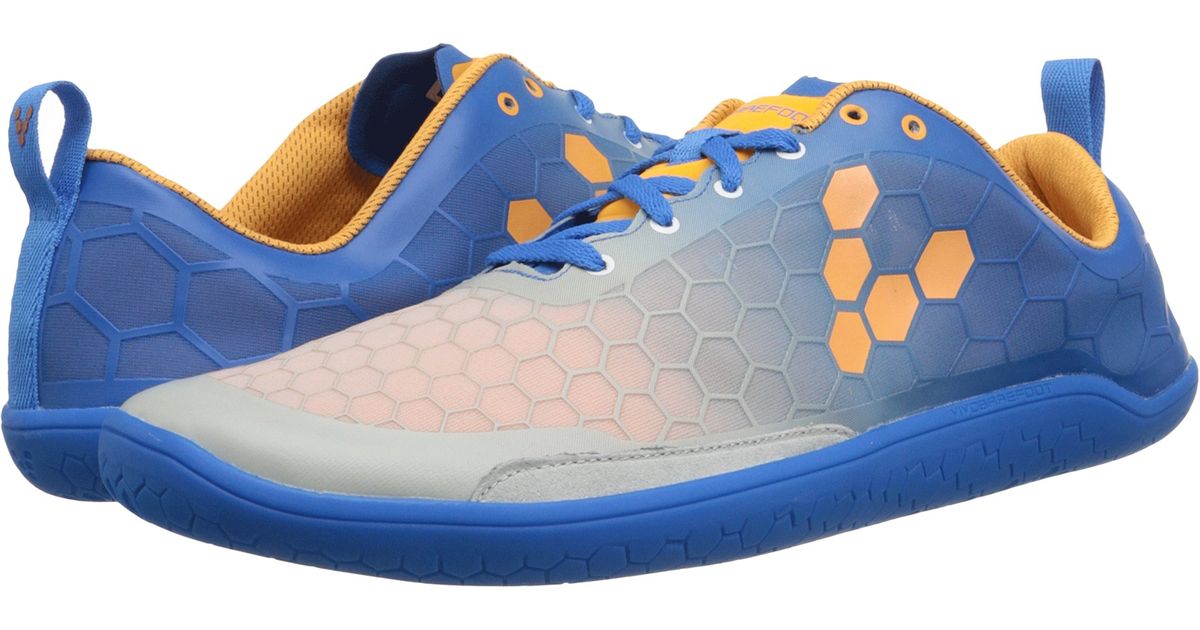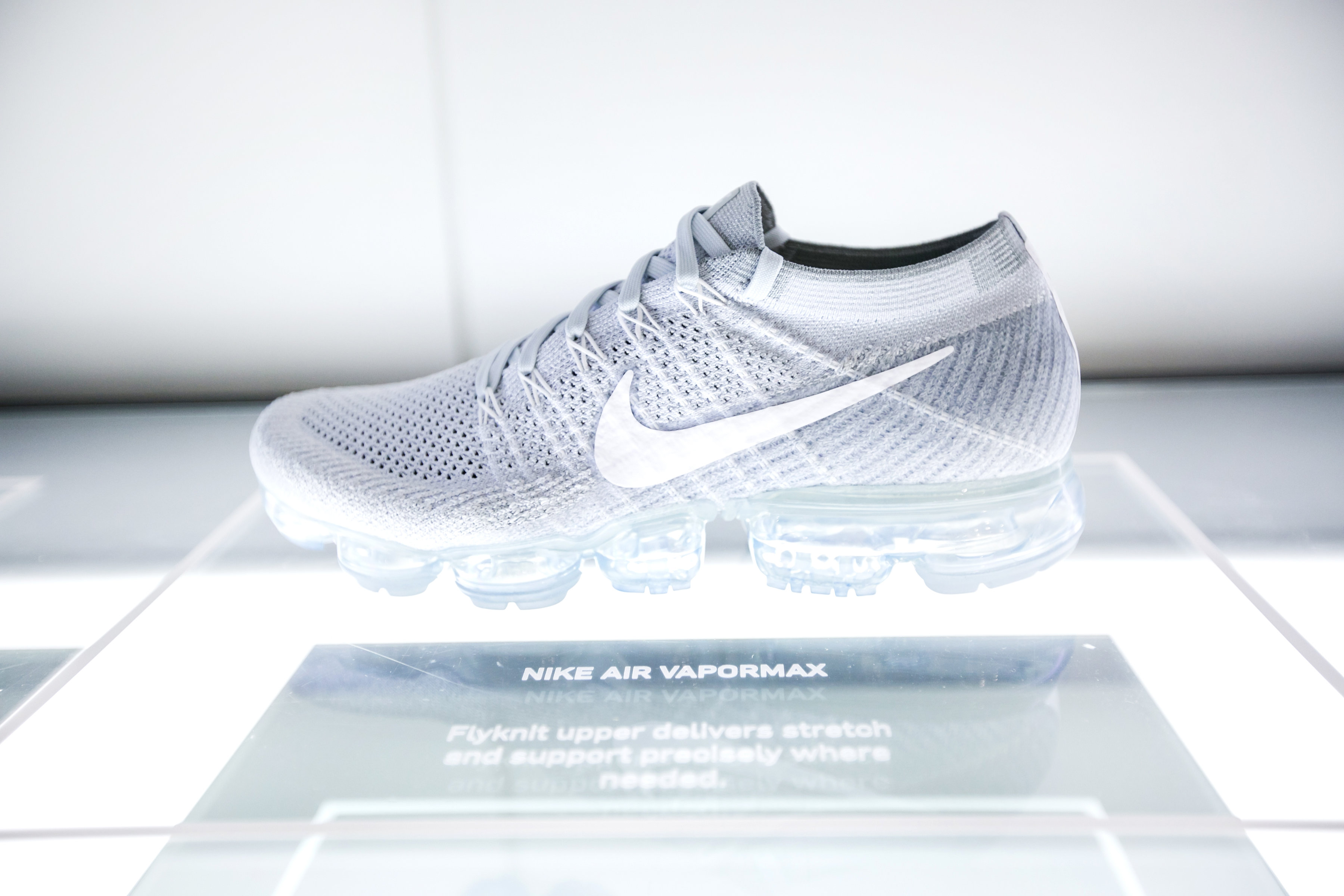Lige som mange andre hørte jeg på tidspunkt konstant om Stryd, en lille footpod som man sætter på skoene, og vupti, man sætter PR efter PR.
Man får dog ikke helt tydelig svar på hvordan det fungerer, der er lidt snak om power men man kan ikke rigtig lure fidusen (det kunne jeg ikke i hvertfald).
Bortset fra de
smukke løfter giver det mere data end en ur kan give, og det kære
venner fik mig med det samme til at række efter mit Dankort.
Hvis du egentlig
bare vil vide om du også skal række efter dit Dankort kan du bare
løse det sidste afsnit, du finder svaret der. Hvis du vil vide helt
nøjagtig hvad dimsen kan, så kan du læse hele smøret, jeg har
forsøgt at beskrive alt jeg ved efter den tid jeg har brugt min
Stryd.
Første indtryk
Når man modtager
sin Stryd får man en meget lille æske med en footpod, to stk. clips
for at sætte den fast bag snørebånd og en oplader. That’s it.
Ingen instrukser eller vejledninger bortset fra en QR-code som
henviser til hjemmesiden.
Du skal også hente
Stryd app’en, hvor du udfylder data som højde, vægt, alder, osv.
Du kan også se nogle tal efter en løbepas, men jeg synes ikke de er
særlig brugelig og lidt mangelfuld.
Start skærmen ser således ud.
Du får en lille tekst med lidt statistik, afstand, tid og den gennemsnitlige power.
Her var der tale om en MAF tur. Jeg kan bruge tallet 268 W som en indikation af, hvilken power jeg skal holde for at fastholde min MAF puls.
Her er der tle om min 3/6 test, noget man bruger til at finde ud af hvor meget power man har.
Det bliver beskrevet nærmere længere ned.
Stryd’s powercenter giver dog
enorm meget data og forslag til forbedring, faktisk så meget at det vil kræve et artikel for sig selv. Her er en af de mange skærme som man kan nørde med:
På deres hjemmeside
får man en instrukser med hvordan man parrer pod’en med dit ur
(Garmin, Polar eller Suunto). Ydermere få man instrukser hvordan man
indstiller uret sådan at pace og distance skal beregnes ud fra data
fra footpod’en og ikke uret. Dette kan jeg varmt anbefale, da GPS
godt kan være meget upræcist i visse omstændigheder (det er derfor
man slår autolap fra under race).
Når man har gjort
det hele klar og har løbet en tur kan man i Garmin Connect pludselig
se en del nye grafer:
- Power
- Cadence
- Ground Time
- Vertical Oscillation
- Form Power
- Leg Spring Stiffness
Wow! Men… Hvad kan
jeg bruge det til? Og hvordan giver disse tal de PR som jeg blev
lovet? Det jeg selv oplevede efter jeg købte min Stryd var lidt som
når man kommer hjemme fra hospitalet med sin førstefødte: en
fornemmelse af at man har fået noget meget værdifuld, men man
egentlig ikke aner hvad man skal stille op med.
Data og hvad du
kan bruge det til
For at kunne blive en bedre løber kan ovennævnte data faktisk være
ekstrem nyttigt, men man skal vide hvad de betyder og hvad du kan
bruge dem til før du får gavn af dem.
Herunder vil jeg forklare hvad de forskellige ting betyder. Stryd har
nemlig ikke rigtig gjort det nemt at finde de oplysninger på deres
hjemmeside.
Power
En af de få tal som Stryd beskriver, det er din indsats målt i
Watt. Stryd kan fortælle dig hvad din ”Powerzones” ved brug af
en fornyelig raceresultat. Alternativt, kan man lave en ”6/3 test”,
hvilket jeg anbefaler, da det er noget mere præcist.
Testen går ud på
at du (med Stryd på) finder en 400m bane og løber 2 omgange (800m)
i rolig tempo (tænk MAF). Lav lidt mere opvarmning, noget som du vil
gøre før en hurtig 5km race.
Tag den inderste
bane og løb så hurtig som du kan 6 runder = 2400m, forsøg dog at
holde et jævnt pace. Hold en 30 minutters pause hvor du jogger lidt
så du ikke bliver koldt og løb 3 runder = 1200 igen så hurtig du
kan.
Nu har Stryd en indication om hvad din maximale power er og giver nogle zoner. Lidt som Heartrate zones eller paces. Længere nede kommer jeg mere ind på hvad du ellers kan bruge power til.
Nu har Stryd en indication om hvad din maximale power er og giver nogle zoner. Lidt som Heartrate zones eller paces. Længere nede kommer jeg mere ind på hvad du ellers kan bruge power til.
Cadence
Kadence på danksk,
en af de magiske ingredienser af KAPA modellen. Her gælder jo højere
tallet, jeg hurtigere du løber. Elite løbere har gerne over 180
skridt per minut og de helt hurtige kommer tit oppe på 190-200. Hvis
du ligger under 160 har du sandsynligvis ikke særlig god løbe
økonomi og lander sandsynligvis hårdere end er godt for dine led.
Garmin viser standard i forvejen din kadence men den gør det ud fra
din armbevægelse og ganger den med 2. Stryd måler simpelthen den
antal gange din fod ramte jorden. Du skal derfor selv gange med 2.
Ground Time
Den tid din fod er i
kontakt med jorden i millisekunder. Det hænger lidt sammen med
kadence, men i mine øjne lidt mere interessant. Jo lavere din
kontakttid er, jo mere effektiv du løber og jo mindre din ”impact
force” eller den kraft du rammer jorden med. Her gælder, jo lavere
tallet er, jo bedre.
Vertical Oscillation
Også
en af de mere interessante tal. Det er en udtryk den bounce (hvor
meget du hopper oppe og nede) man har i cm. Denne skal også gerne
være så lavt som mulig, hvis dette tal er højt bruger du for meget
energi ved opadgående bevægelse, som helst skal være fremadgående
så meget som mulig.
Form Power
Dette tal giver
udtryk for hvor meget styrke din løb kræver. Hvis dette tal bliver
lavere over tid på de samme distance er det en indikation på at du
bliver mere effektiv og er ved at blive hurtigere, da du skal bruge
mindre indsats for samme hastighed.
Leg Spring Stiffness
Dette giver udtryk
for hvor elastisk dine ben er. Hvis du sammenligner din ben med en
fjeder, så vil dette tal give udtryk for hvor stærk en fjeder det
er. Jo højere dette tal, jo bedre dine ben er til at absorbere slag
ved jord kontakt men også hvor meget energi du genbruger.
Minimalist- eller barfodsløbere vil typisk have markant højere tal
end dem som løber på sko med masser af padding.
Hvad du kan bruge
Stryd til
”Run with power”
Som jeg skrev i ovenstående afsnit kan Stryd give nogle powerzones.
Teoretisk set kan du finde det maximale tal på en given distance, og
ligesom når du løber en MAF tur, kun tage stilling til det tal. Så
hvis Stryd siger at du for eksempel skal holde 330 Watt og du holder
tallet på den værdi så meget som muligt vil du løbe den bedst
mulige tid, uanset terræn, blæst eller andre eksterne faktorer.
Super fedt, men du vil ikke kunne forudse hvad din sluttid bliver og
bliver nødt til at stole på at det var det bedste du kunne gøre.
Jeg personlig vil IKKE bruge Stryd på denne måde da jeg gerne vil
være sikker på at min mål blev indfriet
En alternativ til MAF
Claus Hechmann en kendt løbetræner er helt solgt på Stryd og det
er sandsynligvis for følgende årsag: Når man låber MAF ture i
ujævn terræn kan det være enorm svært at styre sin puls, da det
tager lidt tid før hjertet kommer op og nede i gear. Her kan Stryd
virkelig være en fed redskab, ligesom du kan løbe efter en bestemt
antal Watt under en race, kan du gøre det samme under lavere
hastigheder. Jeg fandt efter et par løb ud af (hvor jeg kan havde
power og puls som dataskærme) at hvis jeg løber med omkring 270
Watt så vil min puls lige lige omkring 142 (som er MAF for mig som
38 årig). Selvom jeg går op ad en heftig bakke eller nede kan jeg
holde pulsen stabil ved at sørge for at power ikke kommer over 270
Watt. Jeg har dog lagt mærke til at når det er meget varmt vil
pulsen være 5-10 slag per minut højere med samme Watt, men stadig
stabil. En måde at modvirke det kan være at løbe efter puls på en
lige strækning se hvad din gennemsnit power er og holde den derfra.
Præcision
Som nævnt tidligere anbefaler Stryd at du lader Stryd styre pace og
distance. Dette gør den nemlig uhyggeligt præcist! Jeg har testet
dette på atletik baner og ruter hvor jeg ret præcist ved hvad
distancen er, og det er spot on. Det i sig selv gør Stryd for mig
pengene værd. Du har lige pludselig en pace du kan stole på,
hvilket jeg både under træning og under et race synes er
uundværlig.
Form nerdage
Hvis man elsker at nørde (at det gør jeg) så får man med Stryd
masse ekstra data man kan kaste sig over. Især over længere tid kan
du se om din løbeøkonomi kan forbedres og hvor. Som nævnt for, man
kan målrettet arbejde med leg spring stiffness, vertical
oscillation, og ground contact time.
Overtræning
Noget som Stryd også kan bruges til er at give dig indblik i om du
træner for hård eller ikke restituerer nok. Hvis du kan se din
power og form power falder over tid, især hvis det sker i løbet af
din træningspas kan det være en indikation på at du ikke er
restitueret nok og bliver overtrænet.
Leg spring stiffness er også en tal som helst skal være konstant
under et løbepas (eller faktisk bliver bedre når man er varmt).
Hvis den falder i samme træningspas er du for alvor ved at være
overtrænet. Jeg dog også mene at hvis man når der ud er man nok
også udmattet og pusher sig selv for at bare kunne forsatte.
Skal du købe
Stryd?
Hvis du synes din ur er upræcist og det driver dig til vanvid og du
ikke har noget i mod at investere $200, så kan jeg godt anbefale
det.
Hvis du elsker data og nyder at nørde med din løbestil, så vil du
nok få enorm glæde af Stryd. Det kræver dog at du forstår de data
den kommer med og du i forvejen forstår hvordan du kan forbedre din
løbeøkonomi.
Hvis du er på jagt efter en quick fix for din næst PR, så vil jeg
sige at du nok heller må spare dine penge. Så fed en lille dims som
jeg synes Stryd er, jeg synes den løfte de kommer med at du kommer
til at slå alle dine rekorder er lige så sandsynlig som at den
rette sko vil føre til det samme.
INTET kan give resultater som målrettet træning og hård arbejde












